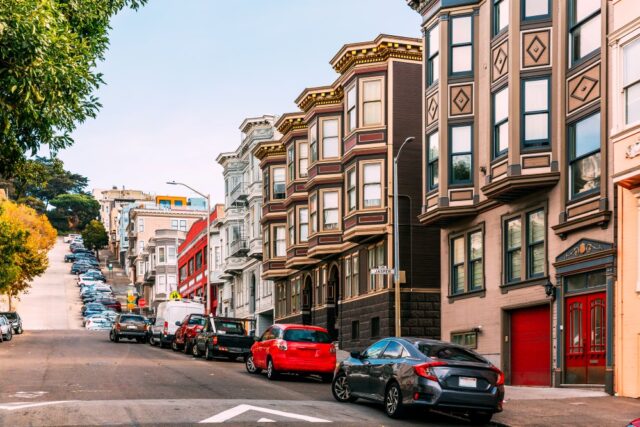The San Francisco real estate market experienced a mix of highs and lows throughout 2024, with moments of progress and setbacks. National and local elections rattled the fall, fueling uncertainty about the potential for a new administration. The rate of inflation cooled from 3.1% to 2.7%, and both houses and condos in San Francisco appreciated year-over-year: median home prices rose about 4% while median condo prices also rose 1% from 2023, according to Patrick Carlisle, the Chief Market Analyst of Compass San Francisco Bay Area.
A strong stock market bolstered confidence with significant gains and infused households with extra income, which had a notable impact on the luxury market segment. Job growth exceeded expectations overall with a distinct hiring boom in the AI sector, an industry highly concentrated in San Francisco with a trend of in-person office attendance. San Francisco’s office leasing activity reached its highest point since 2019, according to CBRE. This resurgence contributed to optimism about the city’s economic recovery.
In 2023, aggressive rate hikes by the Federal Reserve created major affordability challenges for buyers and homeowners wanting to trade up. As 2024 unfolded, pent-up demand was evident and buyers returned to the market when conditions improved. This was especially evident in September and October when rates neared 6%, spiking home sales. John Solaegui, head of The Haven Group at Compass explained, “There was great optimism leading up to the Federal Reserve’s meeting in September that interest rates would be lowered substantially over the coming months and the Committee did lower the prime lending rate by 0.5%, but they messaged that rates would ease more slowly than the market was hoping for. Consequently, interest rates increased on the 10-year treasury note as well as mortgage rates in the latter part of 2024.” At the end of the year, mortgage interest rates ended higher than they were at the start of the year, and trended upward.
Meanwhile, the city has continued to grapple with an affordability challenge: high prices, a constrained housing supply due to sellers locked into a sub-market interest rate, and high borrowing costs. Inventory levels remained a critical issue throughout the year. Demand has persisted, and this scarcity continued to drive up prices in certain segments of the market, particularly for single-family homes and house-like condo opportunities in desirable neighborhoods like Noe Valley, Cole Valley, Pacific Heights, and the Inner Richmond/Inner Sunset districts.
2025 Expectations: Bumpy Start with LA Wildfire Crisis
The San Francisco real estate market is poised for a year of cautious optimism but is off to a rocky start with the devastating Los Angeles wildfires and the California insurance crisis. Top of mind for homeowners and upcoming buyers across California is the availability and affordability of homeowners insurance, which is an acute issue in recent years and is now expected to become an even greater challenge in 2025. The California Fair Plan, which serves as a last resort insurance option for many homeowners, is in a precarious position based on reserve capacity to address the claims in Southern California.
“We’re watching the impact of the Los Angeles fires on insurance rates in the entire State of California. Insurance carriers already suffered substantial losses over the previous years. The property losses incurred in LA are almost unimaginable. Someone will have to pay and that will ultimately be property owners who want adequate insurance,” said John Solaegui, head of The Haven Group at Compass.
Interest rates will remain a key determinant of market activity. Economists are divided on whether the Federal Reserve will ease rates in early 2025, but many expect at least a modest reduction if inflation continues to show signs of cooling. Greg McBride, Chief Financial Analyst at Bankrate, predicts that average rates on a 30-year mortgage will fluctuate before landing around 6.5% by year-end. As we saw in September 2024, a decline in mortgage rates even by a half-point would rejuvenate buyer demand and significantly impact purchasing power, particularly among first-time homebuyers who have been sidelined by affordability concerns.
The AI-related hiring wave is creating unique dynamics within the local job market and will have ripple effects on the Bay Area real estate market. Some tech companies are announcing layoffs in certain teams while also expanding AI-focused roles, many of which require a portion of in-person office attendance in San Francisco. As a result, finding local housing and shorter commutes will make trends in office space utilization a key indicator for the future. Notably, top AI companies like OpenAI, Anthropic, Lamda and Writer have all signed new leases this past year for office space downtown and in Mission Bay. With signs of recovery on the horizon, many are betting on the city’s rebound in 2025.
Jennifer Gottlieb-Shetrit is a realtor (CalDRE#: 02045019) serving the San Francisco Bay Area. She can be reached at [email protected] or www.JenniferShetrit.com.





